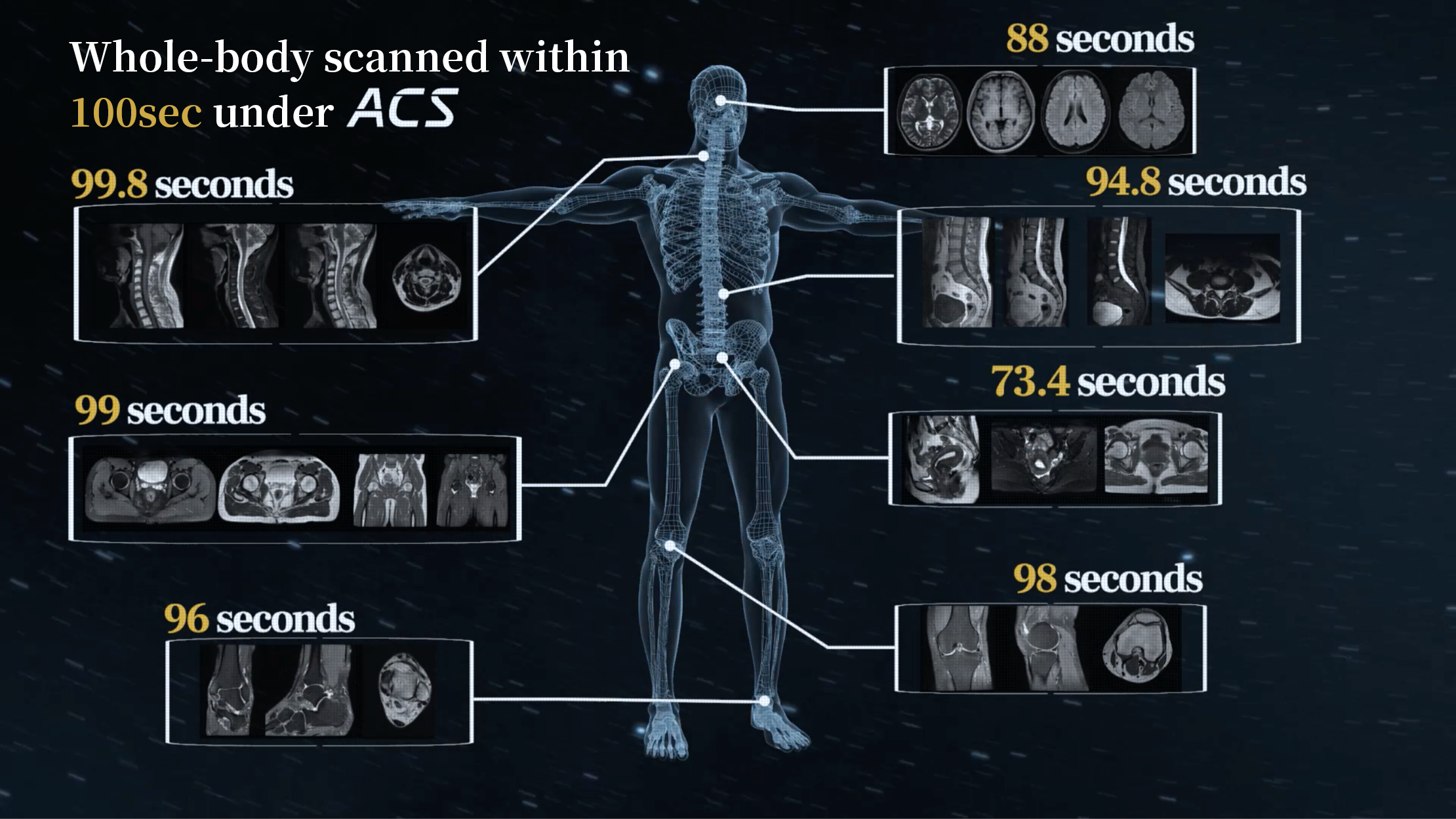In September 2020, a new "world record " emerged. With the help of United Imaging Healthcare's AI-assisted Compressed Sensing (ACS) technology, the first second-level MR acceleration technology in the industry, Tongji Hospital, Tongji Medical College, Huazhong University of Science & Technology successfully scanned a total of 268 body parts within 15 hours in extreme- pressure clinical testing that covered complete sequences of more than ten body parts. The time for a single scan was less than 100 seconds, and the number of scans in a day was 4 to 5 times that of an ordinary radiology department.
The key to whole-body imaging within 100 seconds lies in the essential accelerating reconstruction technologies from various eras optimized by ACS, and the innovative integration of compressed sensing technology and artificial intelligence. Based on this, ACS has developed an intelligent and optimized data collection mode to reconstruct images with the most basic information. Compared with the previous generation of technology, its maximum speed will be 40 times, which greatly improves the efficiency of clinical examination. In addition to imaging within 100 seconds, it provides high-fidelity images. In addition, the shorter scanning time reduces respiration and motion artifacts, and produces clearer images while ensuring the high quality of those images. According to a blind assessment of an expert group made of associate professors other distinguished faculty from Tongji University, all indicators are that the images fully met the needs of clinical diagnosis.
The leap in scanning speed is expected to completely change the problem of difficulty making appointments and long lines for MRI examinations, greatly optimize the patients' medical experience, and improve the efficiency of examinations and patient flow. Imaging within 100 seconds has led to endless opportunities. For example, in patients with acute cerebral hemorrhage or traumatic brain injury, MRI's advantage of higher spatial resolution of pituitary gland, blood flow, and internal soft tissue can be used to obtain more comprehensive imaging information and capture elusive subtle lesions in cerebral blood vessels within a critical time period. At the same time, it can solve the problem that some patients with claustrophobia can't tolerate MRI scans. Currently, United Imaging Healthcare's R&D team is working with partner hospitals worldwide to explore the application potential of ACS to provide more accurate and reliable diagnoses and treatment for patients.

